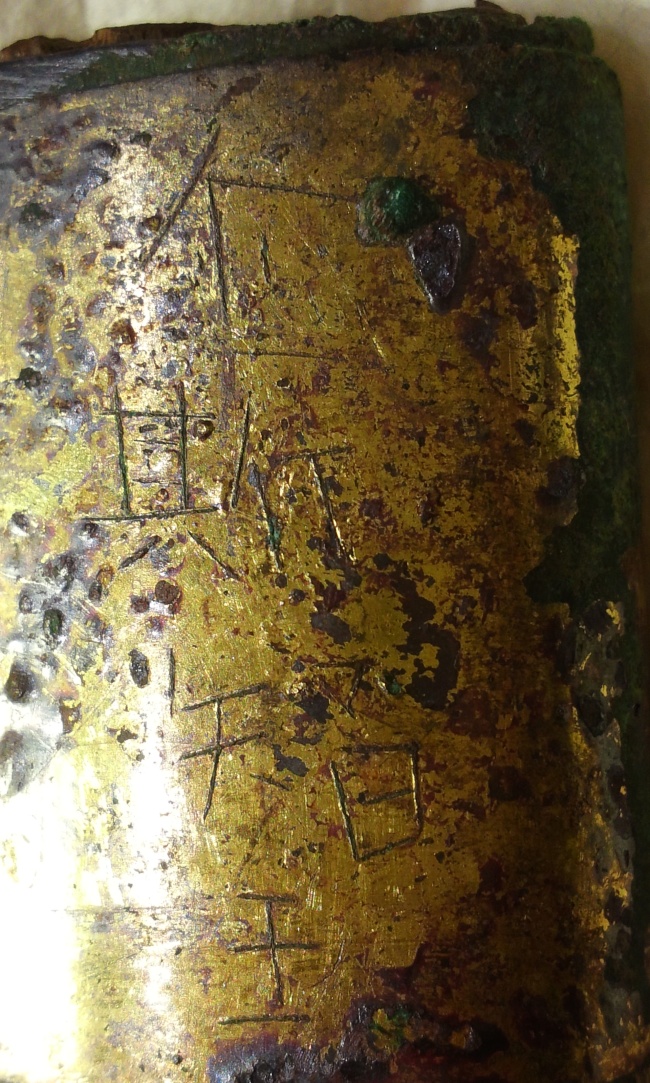Recent discovery on Silla tomb relic may overturn existing theories
By Korea HeraldPublished : July 3, 2013 - 19:42

The National Museum on Wednesday unveiled the discovery of a king’s name inscribed on the sheath of a large sword found at the ancient Geumgwan (Golden Crown) tomb in Gyeongju, North Gyeongsang Province.
The inscription, “Yisajiwang” or King Yisaji, is the oldest name of a king found at a Silla (B.C. 57-A.D. 935) tomb and makes Geumgwan the only sepulcher with an identified owner, researchers at the museum said.
The Geumgwan tomb, believed to have been built in the sixth century, has been thoroughly studied since 1921 when it was accidentally discovered at a construction site. Researchers at the National Museum managed to detect the inscription recently while they were trying to preserve the “sword with ring pommel” that was found more than 90 years ago at the site.
The inscription, “Yisajiwang” or King Yisaji, is the oldest name of a king found at a Silla (B.C. 57-A.D. 935) tomb and makes Geumgwan the only sepulcher with an identified owner, researchers at the museum said.
The Geumgwan tomb, believed to have been built in the sixth century, has been thoroughly studied since 1921 when it was accidentally discovered at a construction site. Researchers at the National Museum managed to detect the inscription recently while they were trying to preserve the “sword with ring pommel” that was found more than 90 years ago at the site.

As for who King Yisaji was, more research is needed. The name is not found in Samguksagi or Samgukyusa, two annals about the Three Kingdoms period ― Silla, Baekje and Goguryeo ― written during the Goryeo era (918-1392).
“The name may refer to either a real king or a very powerful person related to the king. Back then, very powerful royal people were often referred to as kings,” said researcher Hong Jin-keun at a press conference held on the day.
“If the second theory turns out to be true, then we shall have to start studies about ancient Silla tombs from scratch since we previously concluded that all tombs belonged to kings,” he added.
By Bae Ji-sook (baejisook@heraldcorp.com)
-
Articles by Korea Herald



















![[Today’s K-pop] Treasure to publish magazine for debut anniversary](http://res.heraldm.com/phpwas/restmb_idxmake.php?idx=642&simg=/content/image/2024/07/26/20240726050551_0.jpg&u=)